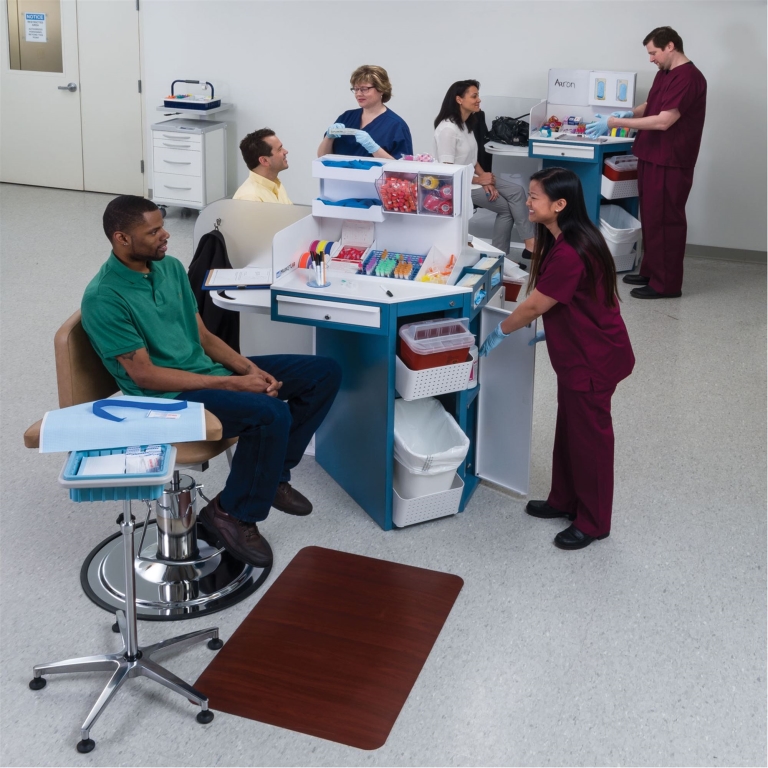mastering Phlebotomy Verification: The essential Guide to Ensuring Accurate Blood draws and Patient Safety
Phlebotomy is a critical skill in healthcare, playing a vital role in accurate diagnosis, treatment, and overall patient safety. Proper verification procedures before drawing blood are essential to minimize errors, prevent contamination, and ensure the right patient receives the correct tests. In this comprehensive guide, we’ll explore the importance of phlebotomy verification, best practices, practical tips, and real-world case studies to help healthcare professionals master this vital aspect of patient care.
Introduction
Accurate blood collection is basic for reliable diagnostic results. However,errors in the verification process can lead to misdiagnosis,delayed treatment,or even serious patient safety issues. Mastering phlebotomy verification involves understanding the protocols, engaging in proper identification procedures, and implementing best practices to ensure every blood draw is performed with precision and safety in mind. Whether you are a seasoned phlebotomist or a trainee, this guide aims to boost your confidence and competence in verification procedures.
Understanding Phlebotomy Verification
What is Phlebotomy Verification?
Phlebotomy verification is the process of confirming the identity of a patient and ensuring the correct specimen collection before drawing blood. This step is crucial to prevent errors such as patient misidentification or specimen mix-ups that can compromise diagnostic accuracy.
Why Is Verification Critically important?
- Patient Safety: Ensures the right patient receives the correct test orders.
- Diagnostic Accuracy: Prevents specimen labeling errors that could lead to incorrect diagnoses.
- Legal and Compliance: Meets accreditation standards such as CAP, JCAHO, and OSHA.
- Operational Efficiency: Minimizes retesting and reduces rework, saving time and costs.
Key Steps in Phlebotomy Verification
1. proper Patient Identification
Accurate patient identification is the foundation of safe phlebotomy practice. Follow these best practices:
- Use two identifiers: Typically, first and last name and date of birth.
- Check wristbands: Confirm the wristband matches the patient’s details.
- Ask the patient: Verify their name and DOB verbally if necessary.
2. Confirm Test Orders and Labels
Ensure the lab orders are clear and match the patient’s details. When labeling specimens:
- Label at the bedside or instantly after specimen collection.
- Use waterproof labels compatible with transport containers.
- Include patient name, DOB, date, time of collection, and your initials.
3. Use the Right Equipment and Techniques
Employ correct phlebotomy procedures to prevent hemolysis and contamination:
- Select appropriate needle gauge and collection tube.
- Follow aseptic techniques during site preparation.
- Verify that the equipment is sterile and in good condition.
4.Confirm Patient Comfort and Consent
Ensure the patient understands the procedure and consents to the blood draw, reducing anxiety and movement that could cause errors or discomfort.
Benefits and Practical Tips for Effective Phlebotomy Verification
Benefits of a Robust Verification Process
- Reduces the risk of mislabeling errors.
- Enhances patient trust and satisfaction.
- Ensures compliance with healthcare regulations.
- Improves overall laboratory accuracy and efficiency.
Practical Tips to Master Phlebotomy Verification
- Always double-check identifiers: Never skip verifying the patient’s identity.
- Communicate clearly: Explain procedures to the patient to facilitate cooperation.
- Stay organized: Keep labels and supplies ready to minimize delays.
- Document thoroughly: Record collection details accurately for accountability.
- Stay updated: Keep current with institutional protocols and training.
Case Studies: Reinforcing Best Practices
Case Study 1: The consequences of Skipping Verification
A hospital experienced a serious incident where a mislabeling error led to a patient receiving incorrect test results,prompting a review of verification practices. The staff identified that in haste, they skipped bedside identification checks, emphasizing the importance of strict adherence to verification protocols.
Case Study 2: Triumphant Implementation of Double-Check Systems
In a busy outpatient clinic,implementing a double-verification system-where two staff members verify patient identity and specimen labels-substantially reduced errors and boosted patient confidence.
First-Hand Experience: Tips from Professional Phlebotomists
Many experienced phlebotomists stress the importance of establishing rapport with patients and maintaining a meticulous approach to verification. Simple practices like pausing to confirm details and maintaining a checklist can make the difference between a successful draw and an error.
Conclusion
Mastering phlebotomy verification is a cornerstone of safe and accurate blood collection. By rigorously following identification protocols, confirming test orders, using proper equipment, and maintaining clear communication, healthcare professionals can significantly reduce errors and enhance patient safety. Remember, each blood draw is an chance to uphold the highest standards of care and accuracy. Implementing consistent verification practices not only benefits patients but also reinforces the professionalism and credibility of healthcare providers.
Stay diligent, stay informed, and continue practicing precision-your patients depend on it!
